The fast tires keep coming, this time from the Italian powerhouse Pirelli. Just in time for the summer race schedule (and Olympics), Pirelli adds another update to the performance focused P Zero Race tire line. Pirelli sat the new P Zero Race TLR RS is its fastest road race tire. Claiming a 13% increase in rolling efficiency (compared to the P Zero Race TLR) and a 8% (more like 3% on our scales) reduction in weight.
How did they accomplish this? Read on and find out.
What is it? Pirelli P Zero Race TLR RS

The new top-tier road race tire from Pirelli shares the same tread pattern and overall design as its predecessor, but it excels with lower rolling resistance and wet weather performance.
To accomplish this, the Pirelli team moved production to an Italian factory in Bollate last year. The new factory is within a stone’s throw of their Milan HQ. There, they hashed out ways to make the P Zero TLR the fastest it’s been, arriving at an all-new P Zero Race TLR RS.

Didn’t the P Zero TLR Race just come out? Yes, and we love that tire (I’ve raced it all last season with zero issues). Like many race-focused companies, the team at Pirelli is always looking for faster, lighter, and better. They hit the nail on the head with the new P Zero Race TLR RS.

First, the team looked for where they could make improvements, most notably in weight, rolling resistance, and all-around weather performance. They leaned heavily on the Trek LiDI World Tour Team for testing and guidance. The current P Zero TLR Race was the team’s go-to tire but was slightly overbuilt. The puncture protection is top-notch, but it also costs in rolling resistance and weight.

The Pirelli team improved on this with an updated Patent-Pending Speed Core technology. This technology consists of a thin, airtight layer of rubber compound infused with aramid particles. Using this layer helps lighten up the casing structure and overall thickness, knocking down the weight slightly and reducing the rolling resistance.

Flats Aren’t Fast
Does this mean the tire is less puncture-resistant? Yes, but…not really. The current version of the P Zero TLR Race is very puncture-resistant. I can’t remember getting a flat on them the entire time I’ve ridden them. They are less flat preventive than the previous version, but remember that these are race tires, and the risk/reward for lower rolling resistance and weight will be worth it to many.
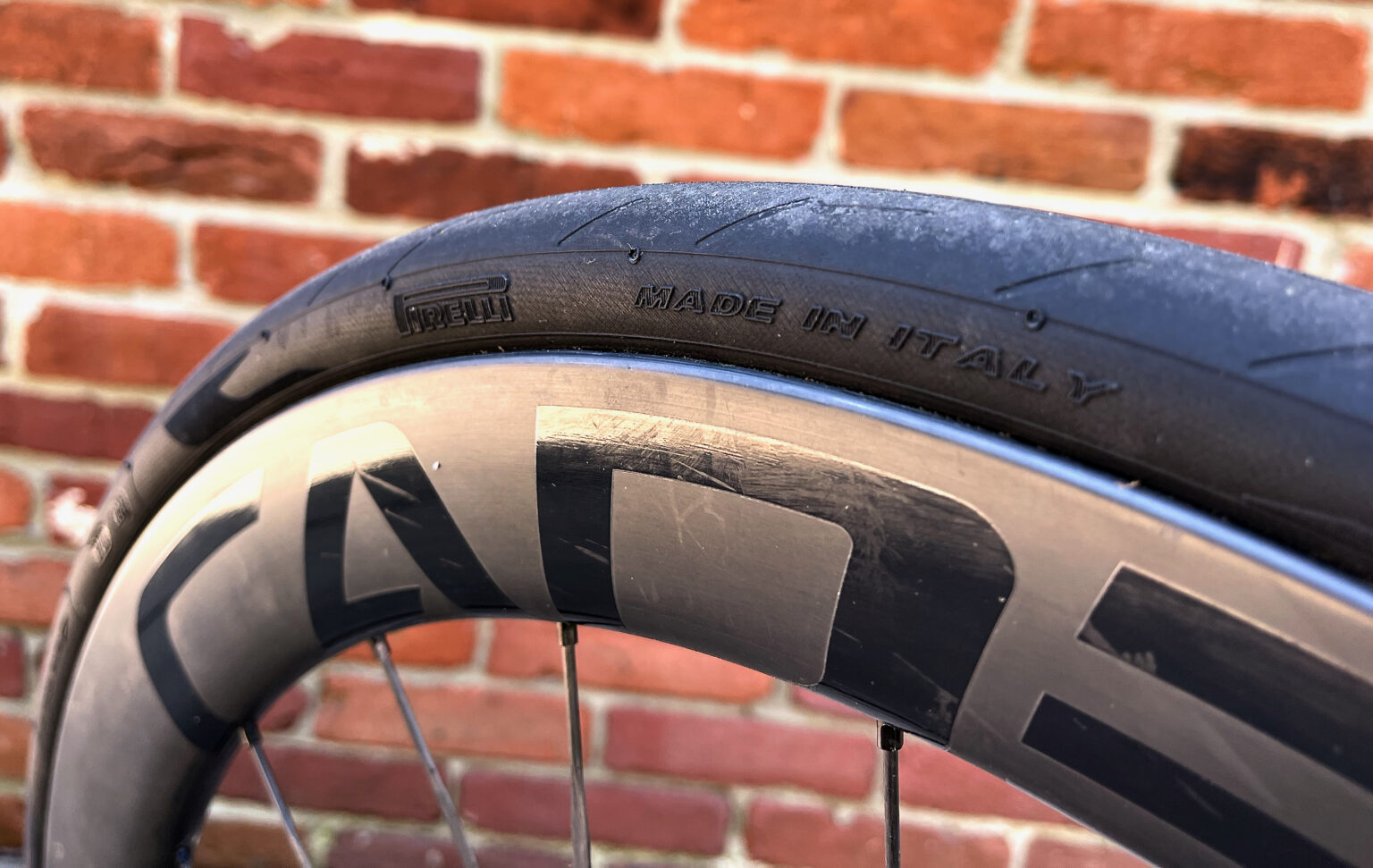
Updated SmartEVO Compound
The Pirelli SmartEVO compound used on the P Zero TLR RS is a product of the new facility in Bollate, Italy. This updated compound improves the tire’s speed and grip. As Pirelli says, “power is nothing without control.” The team looked to improve performance in all race conditions, both dry and wet.

Along with the updated compound comes an updated TLR bead design. This new design improves compatibility and air retention. The rim and bead market has changed, and with it, bead design.
To accommodate modern rim designs, hookless included, Pirelli developed this new TLR bead design under ETRTO and ISO standards.
Modern Tire Sizes
The new Pirelli P Zero Race TLR RS comes in a wide variety of sizes: 26, 28, 30, and 32mm.
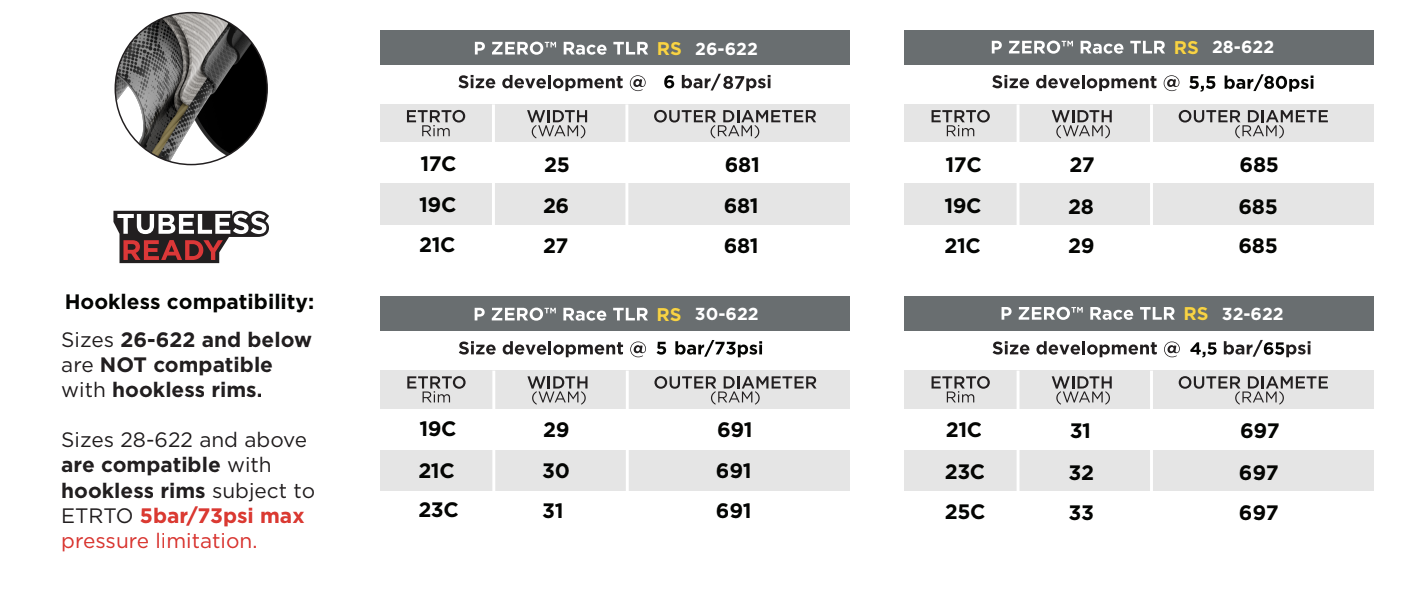
This is enough to fill all the road racing segments and bleed into the all-road market. Like most, 28mm and above are hookless rim approved, but any size under is not.

Details – Pirelli P Zero Race TLR RS
- Price: USD: $99.90, CAD: $136.90, Euro: €89.90, AUD: $144.90 and NZD: $159.90
- Weight: 298g Size 28mm
- Availability: Now

Ride Impressions: Pirelli P Zero Race TLR RS
I admit it: the Pirelli P Zero Race TLR is my go-to road race tire. I have two sets mounted up: one on my training wheels and another on race “please squeeze every watt from my body” wheels. I’ve had a few issues (none, actually) with my current P Zero Race TLR setup.

Unboxing
The new Pirelli P Zero Race TLR RS looks and feels significantly different from the current P Zero Race TLR. The under portion of the tire is notably glossy, and the tire itself has a softer feel. It might be my imagination, but the compound feels softer as well.

Either way, one thing is certain: They are lighter — 12g lighter than the other P Zero Race TLR in a 28mm size (298g vs 310g).
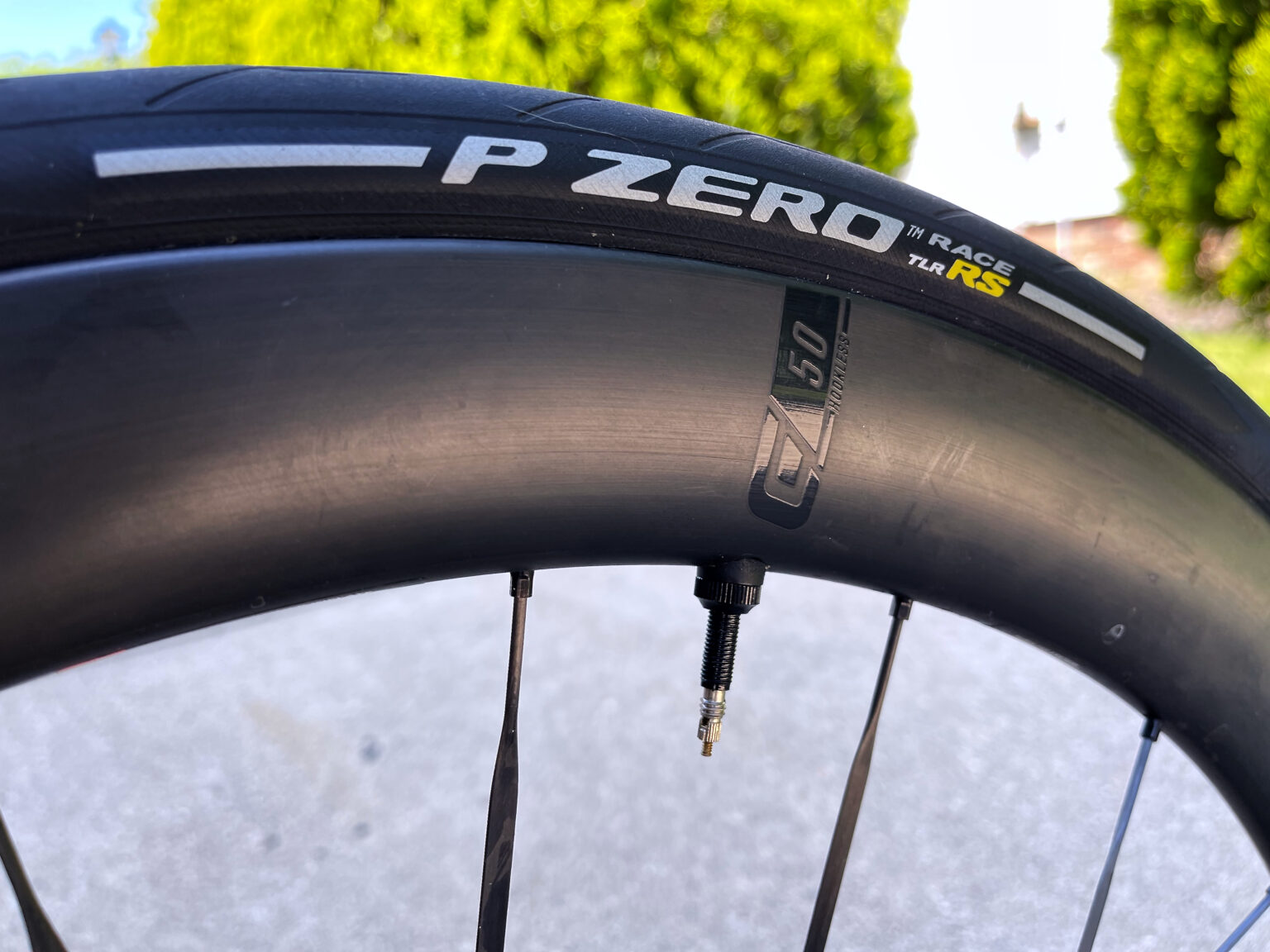
Hookless Mounting
Since there has been a lot of talk about hookless lately, I felt the best review would be from the view of hookless wheel setup. NOTE: Max pressure recommendation on Hookless rims is 72.5psi, Pirelli states that you SHOULD NOT go over the state 73psi.
With minimal effort, I mounted the Pirelli P Zero Race TLR RS tires on the CADEX 50 Ultra (race) wheels. The glossy internal “finish” on the tire made it slip around lightly on the rim, but after some direct attention, it mounted quickly.
I inflated the tires with my trusty Silca floor pump with zero tissues getting the tire to the seat. It’s worth noting that I cleaned the heck out of my valves before attempting this. This allows the air to flow enough to seat the tire without a high volume pump, and hold that seated bead. Which is sometimes is an issue when removing the valve core when seating road tubeless tires.
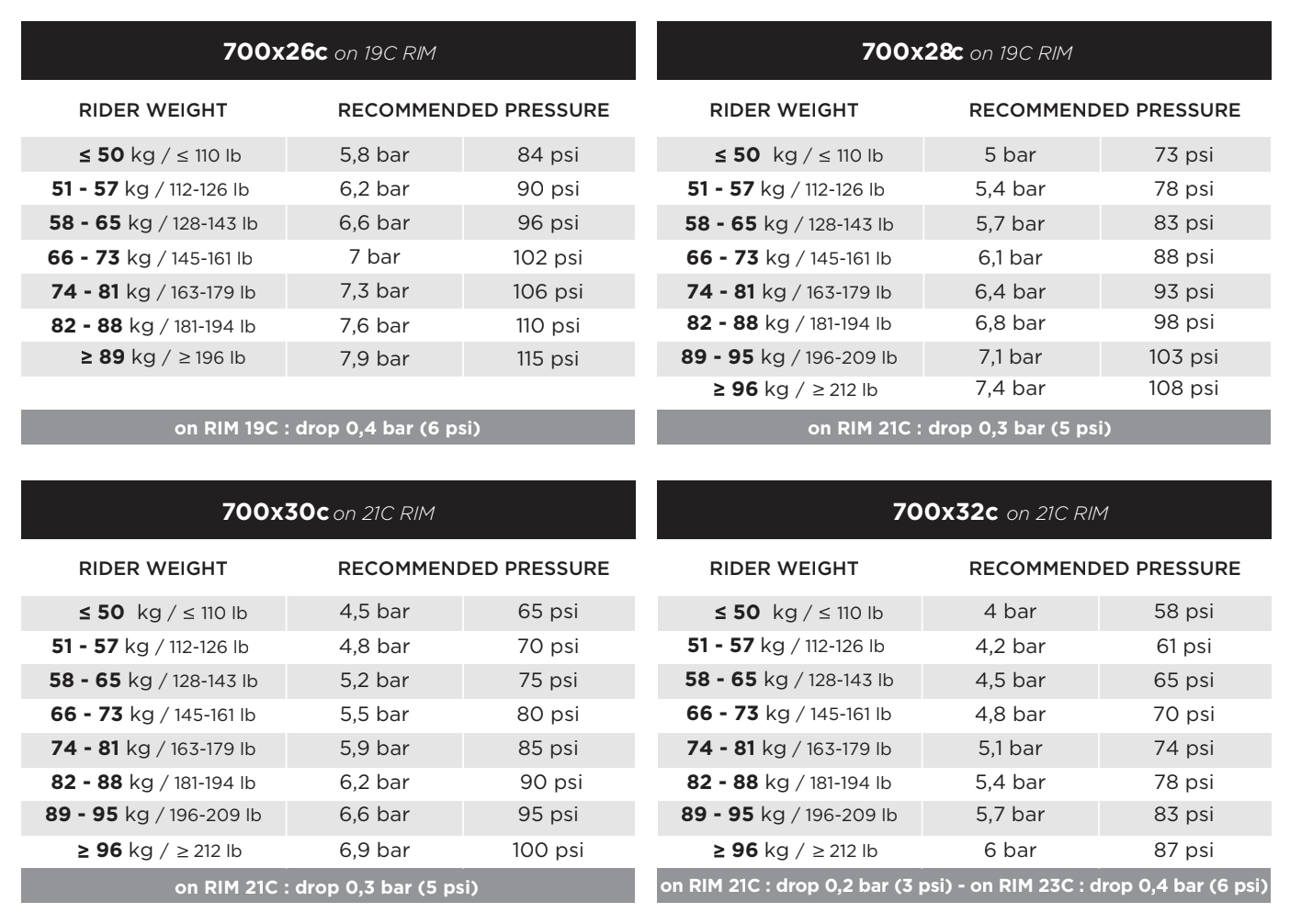
Pirelli Pressure Guidance
The CADEX 50s have a width of 22c, which is a slight tick above whats listed on the guidelines. After inflation to 73psi, the tires plumped up to a nice 29mm and pretty much on the dot of what Pirelli said in their tire inflation guide.

The guidelines are slightly misleading on the tire guide on the Pirelli tire packaging. But are very clear on the above recommendations in RED. Don’t inflate higher than 73 psi. The pressure is higher than I usually run and are at the top of some hookless rim recommendations (72.5 for some MAX). All in all, though, the tires felt nice and comfortable at 71psi for 160lbs.

On the Road
At the same pressure that I ride my P Zero Race TLR tires at (70-73psi), the Pirelli P Zero Race TLR RS felt nearly the same. I did have that “new tire feeling” in some sections and thought I felt a faster roll into some downhills, but it’s unsubstantiated. The tire felt just as comfortable as the P Zero Race TLR, and I rode with the same confidence on poorly maintained roads.

Though I only had a few rides in the rain on the Pirelli P Zero Race TLR RS tires, they felt as good or better than any others in the P Zero lineup. Per Pirelli’s recommendations, I dropped the tires at 5-ish-psi for the rainy training day and felt confident in the performance. I couldn’t feel much or any rolling resistant loss (they felt better actually), and I was feeling the confidence in the corners — here on after, 70psi was my new go-to pressure.

With the same setup and the same equipment, I felt faster on the super smooth and more well-maintained tarmac. This, again, is a “feeling,” but as any racer will tell you, a large part of going fast, is feeling fast.

At the Races
At our local weeknight crit, I had a chance to give the Pirelli P Zero Race TLR RS a proper test. The tires rolled fast on our traditional Oval shaped course — I felt confident in the traction. The performance was nearly identical to the Race TLR versions, with an unexplained springiness to them. That feeling could be the excitement of summer night racing or the new compound and lightened carcass of the tire.
Racing our “bullet” shaped crit course, I was able to push the corning a bit more. I found the tire comfortable with a confident performance. The tire’s sidewall felt slightly more corner-friendly when leaning the bike over, slightly more supple. I attribute this to the thinned-out casing and a bit to the compound.
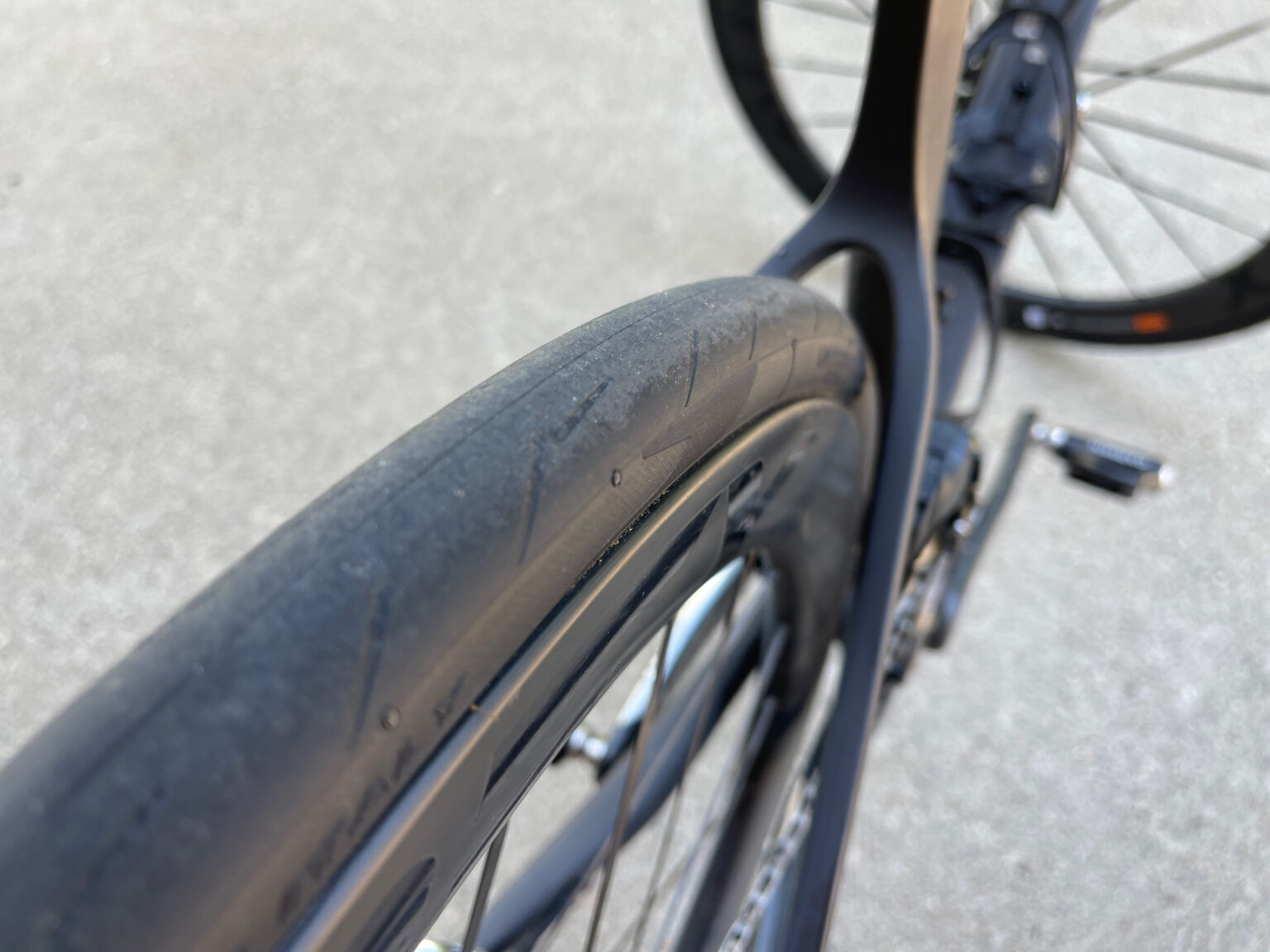
Final Impressions
Without all the technical data from Pirelli, it is impossible to prove that the tires are indeed faster. All we have to go off of is Pirellis claim of 13% increase in rolling efficiency from the already fast P Zero Race TLR and a slight reduction in weight.
I have to settle on my ride sensations and race impressions. As a fan of the previous P Zero Race TLR, I find this improvement (all be it slight) excellent. I see these as a go-to race day tire to give any road racer that extra edge and confidence on race day. The price? Yeah, these are performance “race-day” tires, and with that comes a higher price. Considering the wear and puncture resistance of the previous top-tier Race TLR, these should hopefully prove their price.
We’ll be back with an entire season of racing reviews, but as of now, these are my new road race tires. I’ve yet to have a flat (knock on wood), and the tire wear seems on par with most race-focused tires we test.

